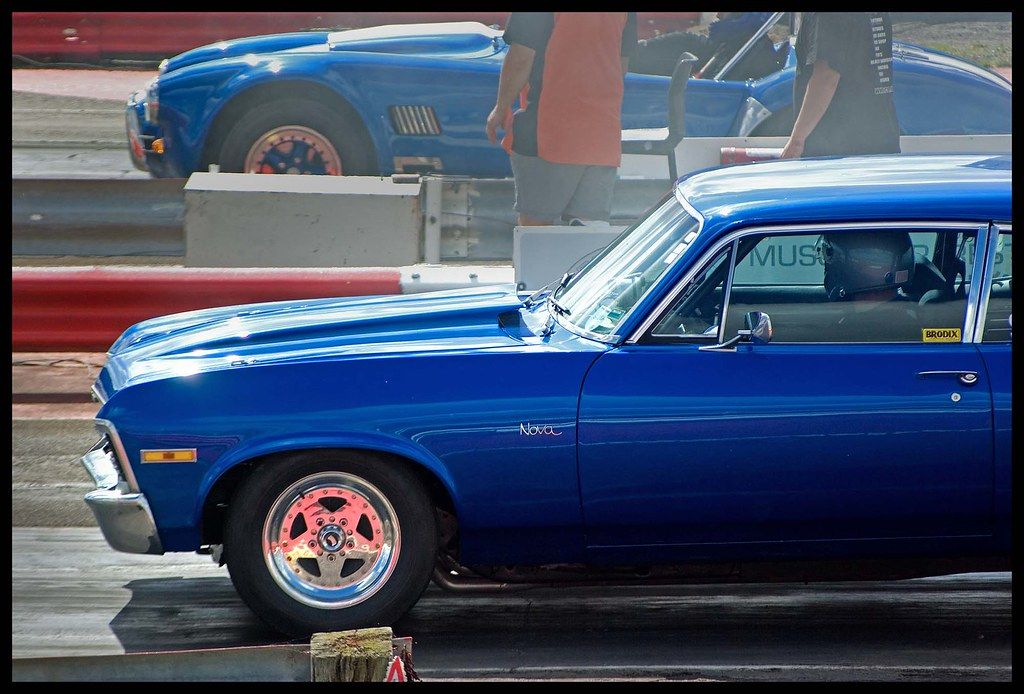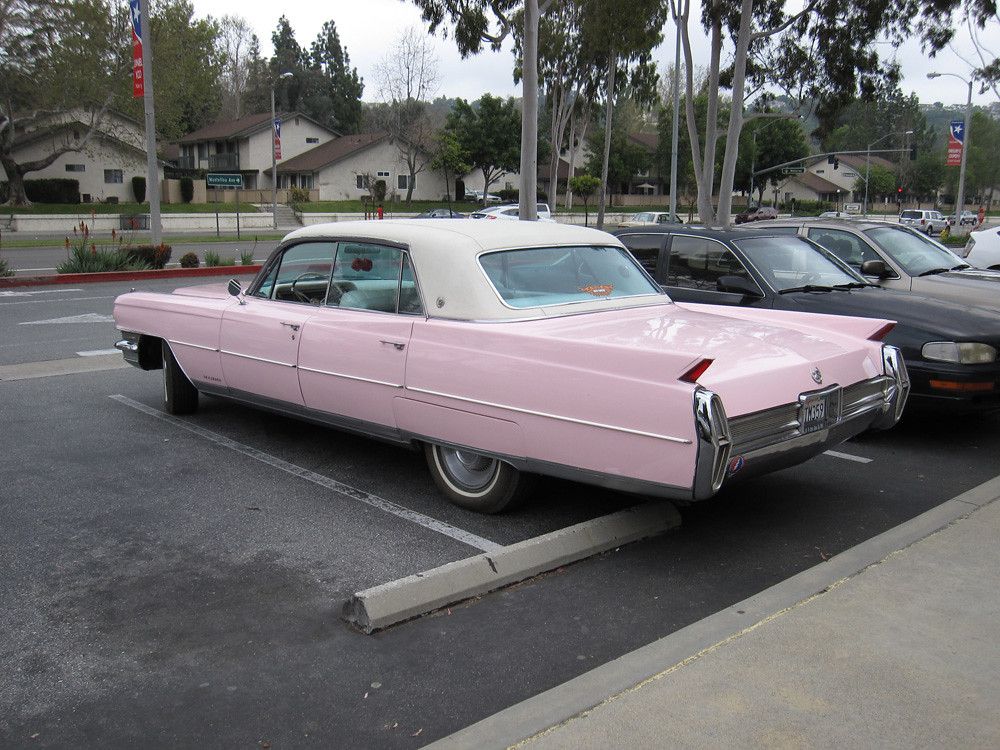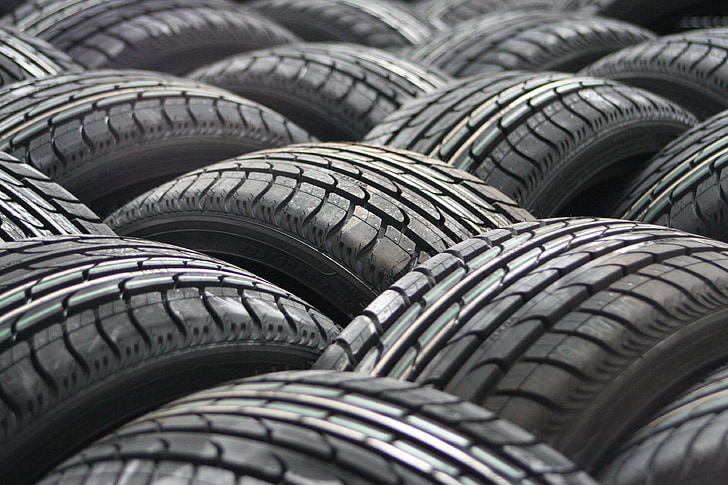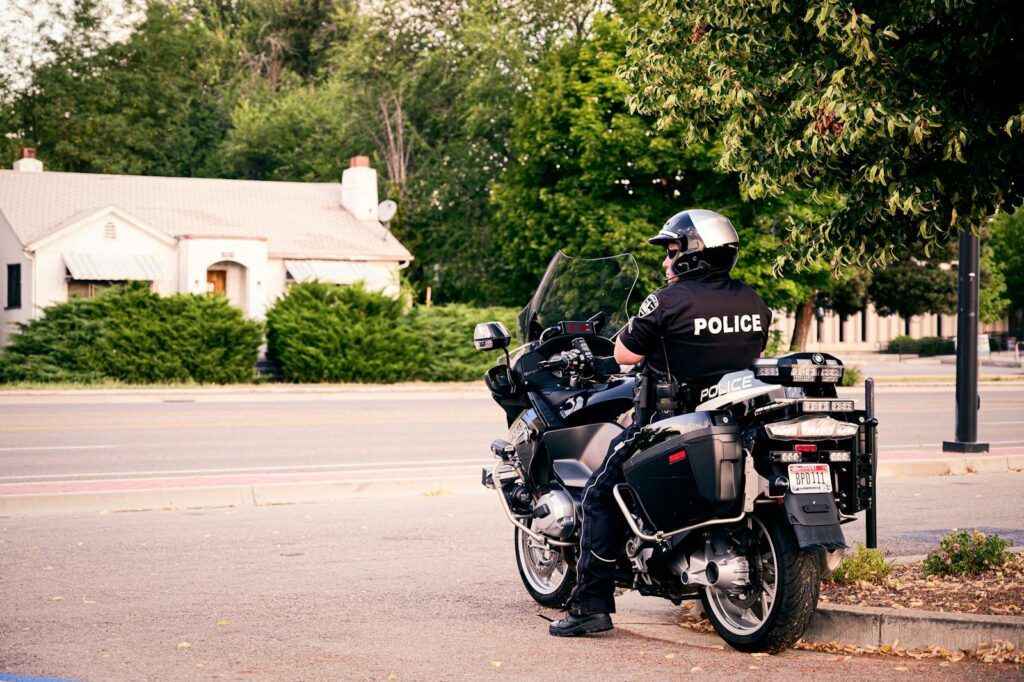
Strap in, folks, because we’re about to embark on an epic journey through the pulsating heart of Honda’s motorcycling empire! For over 75 years, the Honda Motor Company has been a titan, not just in automobiles, but crucially, as the progenitor of some of the most exhilarating, reliable, and downright iconic two-wheeled machines the world has ever seen. From humble beginnings with a motorized bicycle in post-WWII Japan, Soichiro Honda’s vision ignited a flame that has burned brightly ever since, constantly pushing boundaries and redefining what a motorcycle can be.
Honda’s success isn’t just measured in sheer numbers, though they’ve certainly got those in spades. It’s about the raw emotion, the thrill of the ride, the unwavering reliability, and the sheer impact these machines have had on global culture. Whether you’re a seasoned track warrior, a cross-country adventurer, or a daily commuter, a Honda has likely touched your life or inspired your dreams. They’ve screamed around MotoGP tracks, cruised down lonely highways, and shifted paradigms for generations of riders.
Today, we’re not just looking at a list of bikes; we’re celebrating a legacy, a testament to relentless innovation and a genuine passion for engineering excellence. So, let’s peel back the layers and discover some of the most successful Honda motorcycles in history – machines that weren’t just good, they were legendary, earning their place in the pantheon of motorcycling greatness without a single shred of unnecessary hype. Prepare to be inspired by the sheer brilliance of Honda’s finest!
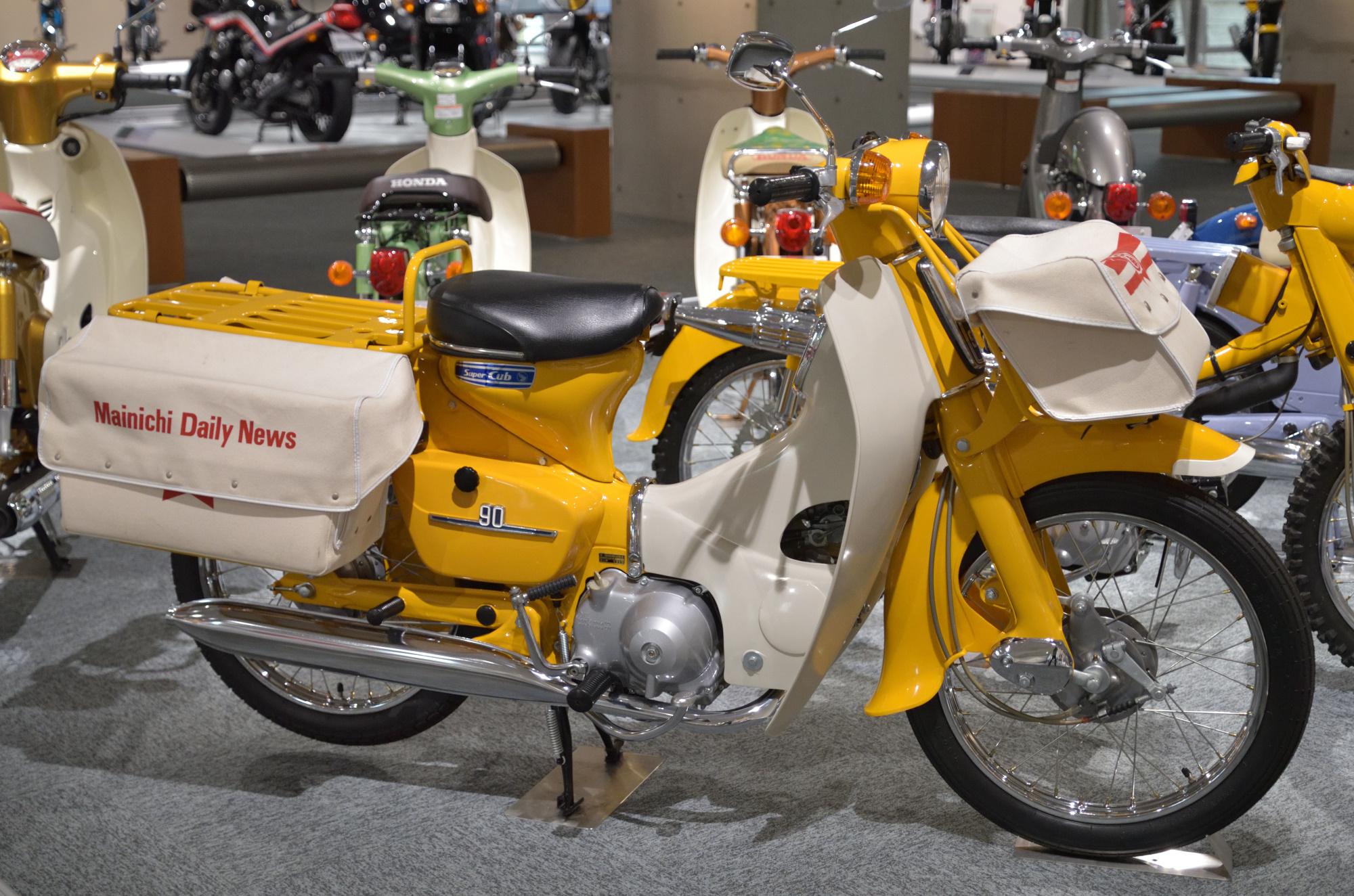
1. **Honda Super Cub: The Everyday Legend**What better way to kick off our celebration than with the undisputed, reigning champion of sales? The Honda Super Cub isn’t just a motorcycle; it’s a global phenomenon, the best-selling motor vehicle of all time, with over 100 million units sold. By the 1950s, Honda was already making waves, but company executives, led by president Soichiro Honda and managing director Takeo Fujisawa, harbored ambitions to take their predominantly domestic success onto the international stage. Their European trip illuminated a path, and upon their return to Japan, a directive was issued: create something truly special.
The vision was clear and utterly revolutionary for its time. They demanded a bike with a high-powered four-stroke engine, but it had to be light and handleable enough for women to operate with ease. Crucially, it needed a clutchless shifting method to simplify the riding experience and a timeless design that would appeal to everyone. The result, unveiled in 1958, was the Honda Super Cub C100. This 49cc commuter vehicle was everything they had hoped for and more: easy to use, incredibly inexpensive, wonderfully reliable, and it masterfully filled the gap between cumbersome mopeds and full-sized motorcycles.
Fujisawa, ever the shrewd businessman, set an ambitious target of selling 30,000 units monthly to cover production costs. But the Super Cub wasn’t just a success; it was an instant sensation. A thousand units flew out the door on the very first day! Honda, ever responsive to demand, quickly ramped up production to an astonishing 60,000 units per month and, as they say, the rest is history. The Super Cub proved that utility, affordability, and joy could indeed go hand-in-hand, empowering millions across the globe.
Its journey didn’t stop there. Two updated editions appeared within its first decade, and in 1981, Honda released the 105cc Super Cub CT110, specifically designed for off-road adventures. Today, the biggest and most recent Super Cubs boast 125cc engines, continuing their legacy as an internationally utilized commuter bike. As the context beautifully puts it, “Few machines have done more for everyday riders than the Super Cub, a bike so reliable and efficient that it became the top-selling motor vehicle of all time. With its step-through frame, auto-clutch transmission, and unbeatable fuel economy, this gave independence to millions around the globe.” It’s a testament to simple genius and unwavering reliability.

2. **Honda Gold Wing: The Ultimate Comfort Cruiser**Now, let’s shift from the sheer utility of the Cub to the pinnacle of two-wheeled luxury: the Honda Gold Wing. Honda, in its relentless pursuit of building every kind of motorcycle imaginable, recognized that blistering speed and convenient commutes were one thing, but access to every vehicular comfort aboard a motorcycle was a particular, irresistible pleasure. The Gold Wing debuted to immediate acclaim at the 1975 Cologne motorcycle show and has reigned as Honda’s flagship luxury motorcycle ever since.
Now, let’s shift from the sheer utility of the Cub to the pinnacle of two-wheeled luxury: the Honda Gold Wing. Honda, in its relentless pursuit of building every kind of motorcycle imaginable, recognized that blistering speed and convenient commutes were one thing, but access to every vehicular comfort aboard a motorcycle was a particular, irresistible pleasure. The Gold Wing debuted to immediate acclaim at the 1975 Cologne motorcycle show and has reigned as Honda’s flagship luxury motorcycle ever since.
The original Gold Wing, with its liquid-cooled 1000cc engine, looks almost spartan compared to the opulent machines of today. Yet, it was an instant success, lauded as an ultra-smooth and powerful comfort cruiser. Riders, however, had grander plans for this silky-smooth GL. They wanted to transform it into a long-distance tourer, and a vibrant aftermarket quickly developed to cater to this burgeoning demand. Honda, always listening to its riders, recognized this need and pivoted with characteristic agility, integrating these desires into its official offerings.
The second generation, hitting the market in 1980, marked an evolutionary step towards full touring glory, but it wasn’t until 1984 that the Gold Wing GL 1200 truly aimed squarely at comfort. This was where the magic really began, with the addition of a full windscreen, protective fairings, a radio, air suspension, and, crucially, luxurious padded seating. It became clear that the Gold Wing wasn’t just a motorcycle; it was a mobile throne designed for epic journeys, redefining expectations for what a touring bike could be. It was, as the context states, “Instead of chasing speed records, the Gold Wing chased comfort and control.”
Fast forward to today, and the sixth-generation Gold Wing stands as a model of modern motorcycle technology, a veritable land yacht for the open road. Power comes from a single overhead cam 1,833cc flat-six engine, delivering a silky 98 horsepower through either a six-speed manual or an automatic transmission – choice, luxury, and performance rolled into one. And the bells and whistles? Oh, they’re all there: traction control, ABS, hill start assist, an advanced infotainment screen, and so much more. While Honda remains tight-lipped about exact production numbers, a 2011 article in the Washington Times estimated around 640,000 Gold Wings sold. Add another decade of devoted touring fans to that figure, and you’re talking about a seriously successful, supremely comfortable motorcycle that truly became the ‘gold standard’ for touring excellence.

3. **Honda CB750: The Superbike Revolution**Prepare yourselves for a machine that didn’t just break the mold, it shattered it and then meticulously reassembled the pieces into something entirely new. The Honda CB750, a cornerstone of the enormously successful CB line, is not just a motorcycle; it’s a legend, often credited in the fervent debate as the world’s first superbike. Its classic status is undeniable, yet it curiously remains affordable, a testament to its mass-market impact rather than rarity.
The genesis of this icon can be traced back to 1966, a challenging period when Honda’s sales in America were dipping. American riders, it seemed, adhered to the mantra that bigger was better, and while Honda’s two-cylinder CB450 was a fine machine, the larger British 650s held greater appeal. Then came the spark of innovation: upon learning that Triumph was developing a triple-cylinder 750, Honda’s head of development, Yoshiro Harada, made a bold decree. Honda, he declared, must develop one of its own—but with one more cylinder.
The resulting CB750 didn’t just light a fire; it ignited the entire motorcycling world upon its market launch in July 1969. This marvel, boasting a single overhead cam inline-four engine, was the perfect confluence of scorching performance and Honda’s signature simplicity. With a power rating of 67 hp, it effortlessly beat Harleys twice its size, delivering an exhilarating ride unlike anything seen before. What’s more, it was the first production bike to proudly sport disc brakes, meaning it could stop as sensationally as it could go.
But the revolution wasn’t just in its technical prowess; it was in its accessibility. With an incredibly affordable MSRP of $1495, it undercut comparable British offerings by about $500, democratizing high performance. Initially, Honda optimistically expected to sell around 1500 CB750s annually. However, demand was so overwhelmingly high that the company had to dramatically increase production to a staggering 3000 bikes per month! The CB750 not only sparked a monumental debate about the first superbike but also “ignited an arms race among motorcycle manufacturers, captivating enthusiasts with the quest for the fastest, most thrilling machine.” It wasn’t just a bike; it was a paradigm shift. As the context aptly states, “Rather than raising the bar, the model rewrote the rules entirely.”
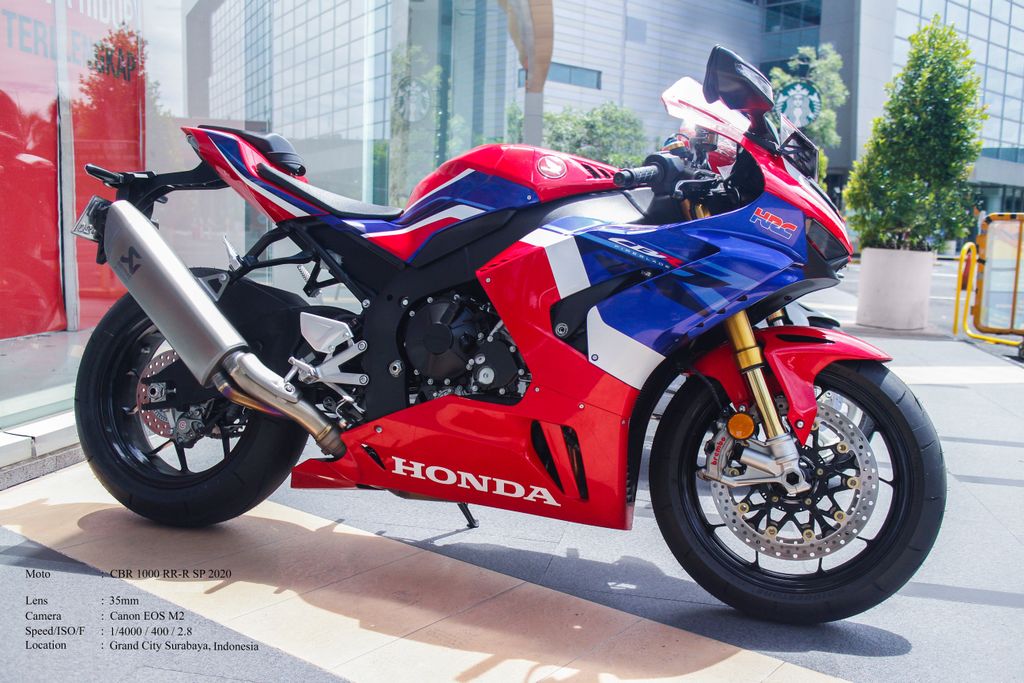
4. **Honda CBR1000RR-R Fireblade SP: King of the Performance Castle**If the CB750 was the superbike of the 1970s, then the modern era demands a beast of an entirely different caliber. Things have changed dramatically, with candy-colored full-fairing race bikes making their dramatic appearance in the mid-1980s, exemplified by the 1985 GSX-R 750 which truly shifted the paradigm of what a superbike could be. But Honda, ever the quiet innovator, had laid its own groundwork just a year prior, introducing the CBR400F – the very first bike to carry the now-legendary CBR name. Since then, CBR has become Honda’s premier performance designation, and the current CBR1000RR-R Fireblade SP stands as the fastest Honda motorcycle to date.
The Fireblade lineage is a tale of relentless evolution and escalating power. It finished off the millennium with the formidable 929 cc CBR900RR in 1999, then upped the displacement to 954 cc in 2002 before arriving at the iconic 999cc in 2003, giving birth to the CBR1000RR. This was a machine that was “as close to a full racebike as a street rider could get,” pushing the boundaries of what was achievable on public roads. It’s a bike born from the track, for the most discerning and daring of riders, embodying pure, unadulterated speed and precision.
The latest generation, launched in 2020 as the CBR1000RR-R Fireblade SP, is nothing short of an engineering marvel. It boasts a staggering 214 horsepower from its 999 cc liquid-cooled inline-four engine, all packed into a svelte 432-pound package. Taming such immense power requires equally impressive stopping capabilities, delivered by dual 320-millimeter disc brakes with a pair of four-piston calipers in the front, complemented by a single-piston 220-millimeter disc in the rear. A preloadable damper system ensures the wheel stays pointed exactly where the rider demands, offering unparalleled control at blistering speeds.
Honda is, without question, one of the world’s best and most respected manufacturers, and the CBR is the undeniable king of its performance castle. With a neck-snapping 3.4-second 0 to 62 miles per hour time and a top speed of 188 miles per hour, it’s safe to say it’s not just in the conversation, but a front-runner, as one of the fastest literbikes around. Equipped with a host of advanced electronics like ride-by-wire throttle, traction control, wheelie control, launch control, and cornering ABS, the Fireblade SP is, in every sense, “the ultimate expression of Honda’s racing DNA and one of the fastest and most powerful motorcycles in the world.” It’s a machine that thrills, excites, and dominates.

5. **Honda Africa Twin: The Reborn Adventurer**From screaming superbikes, we venture into the untamed wilderness with the legendary Honda Africa Twin, a machine born from the crucible of the world’s most grueling rally. In 1984, Honda, with characteristic audacity, dispatched a delegation to the infamous Paris-Dakar Rally. Their mission: to understand precisely what it would take to join—and conquer—this brutal spectacle. They returned with an uncompromising list of parameters: cruising speeds of nearly 100 mph, a suspension rugged enough to survive falling off a 10-story building, a bike that could be repaired in the middle of the desert, and a formidable 280-mile range. These were not mere suggestions; they were commandments for adventure.
The direct result of this daring expedition was the NXR750. This incredible machine, powered by a 779cc 45-degree V-twin, didn’t just compete; it achieved an astonishing four consecutive Dakar wins. This feat alone solidifies its place as one of the most successful Hondas ever. But for Honda, racing isn’t just about accolades; it’s a crucial means to an end. The knowledge gained in the scorching sands of Dakar was destined for the consumer market, aimed at empowering everyday riders with unparalleled adventure capabilities.
Thus, the XRV650, affectionately known worldwide as the Africa Twin, made its grand debut in the spring of 1988. It was an immediate hit, embodying the spirit of its rally-winning ancestor. It saw upgrades to a 750cc engine for the 1990 edition and received a facelift in 1996, cementing its status as a beloved adventurer. However, sometimes success is as much about redemption as it is about initial glory, and the Africa Twin, to the delight of enthusiasts globally, came roaring back in 2016, proving that legends truly never die.
The return of the Africa Twin, in the form of the CRF1000L, drew massive attention even before its official launch. The reborn adventurer featured an in-line twin configuration, replacing the traditional V, and was absolutely brimming with all the modern tech goodies a rider could dream of. Traction control, ABS, a meticulously engineered low center of gravity, and vastly improved suspension all conspired to create a machine that was both capable and confidence-inspiring. Major updates followed in 2018, and a significant 2020 overhaul installed a powerful 1,100cc powerplant, further cementing its prowess. To this very day, the Africa Twin stands as one of the most popular bikes among adventure riders, its future as bright and expansive as the horizons it was built to conquer. As the context summarizes, “Built to conquer harsh terrain, the Africa Twin channels its Dakar rally roots through durable gearing, extended suspension travel, and a frame engineered for endurance. Designed for those who chase untamed routes, it thrives where smooth roads end.”
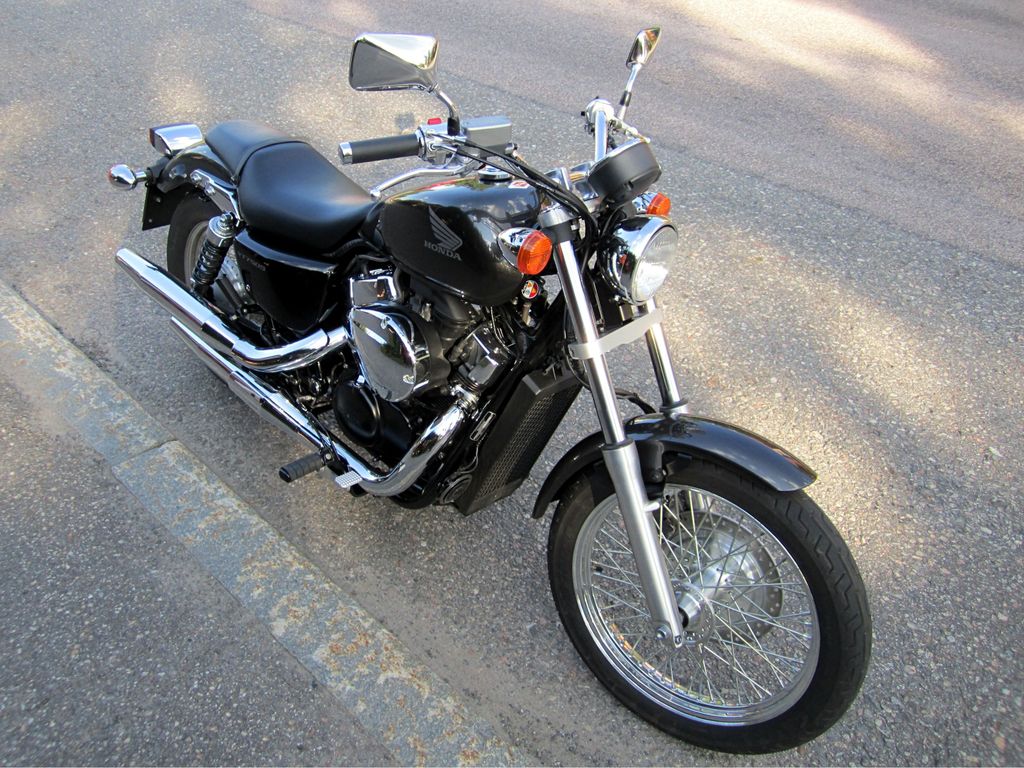
6. **Honda Shadow: The Enduring Cruiser Icon**Having explored the world’s best-selling commuter, the ultimate tourer, a superbike revolutionary, a modern track titan, and a Dakar-conquering adventurer, it’s time to ease into something a little more, well, *cruisy*. Honda, in its insatiable quest to build every kind of motorcycle imaginable, didn’t shy away from the V-twin cruiser realm. In 1983, they unleashed the VT500C Shadow, a machine designed not to dominate race tracks or conquer continents, but to offer a slice of comfortable, accessible Americana to the masses.
What made the Shadow an instant hit, and indeed an enduring success, was its approachable nature. It boasted a manageable V-twin engine, a saddle set delightfully low, and a riding position that was, quite frankly, a joy to inhabit. It wasn’t an intimidating beast; it was a friendly giant. This was Honda’s elegant alternative to the often more intense and expensive American cruisers, providing a welcoming gateway for new riders still learning to find the kickstand, while also offering a satisfying rumble for seasoned road warriors.
Over its remarkable tenure, the Shadow has taken on a multitude of forms, catering to every conceivable taste and experience level. From nimble 125cc versions that have seen countless new riders wobble confidently through traffic cones in England and Europe, to robust 1,100cc iterations, there truly was a Shadow for everyone. The 2011 Shadow VT750RS, for example, bore an uncanny resemblance to a certain famous American Sportster, but with Honda’s renowned stamp of reliability ensuring fewer roadside dramas. Even today, the bobber-inspired 2024 Phantom Shadow carries this iconic nameplate into the future, sporting a classic contemporary feel that refuses to age.
With an astonishing 91 generations spanning 41 years and still counting, the longevity of the Shadow series alone speaks volumes about its undeniable success. It’s a testament to Honda’s vision for a ‘do-anything cruiser’ – a motorcycle that gracefully blended style, comfort, and reliability, casting a long, impressive shadow over the cruiser segment and winning hearts for decades. It’s proof that sometimes, the greatest machines are simply those that make riding accessible and enjoyable for all.
Read more about: The Ultimate Throwback: 14 Cars That Every Grandma (And Probably Your Mom) Drove
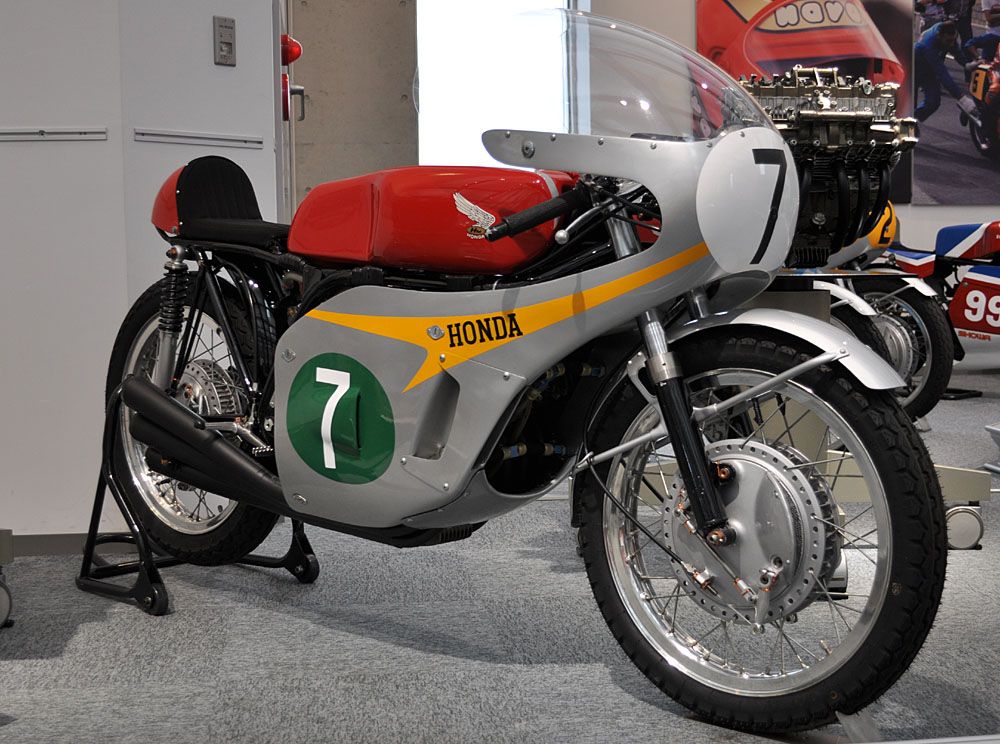
7. **Honda RC166: Six-Cylinder Symphony on the Track**No odyssey through Honda’s motorcycling triumphs would be complete without a roaring visit to the hallowed grounds of the racetrack. Honda’s foray into motorcycle racing began with Soichiro himself entering the 1954 Isle of Man TT, a bold statement of intent. By 1960, they were tackling the World Grand Prix in the 125 and 250cc classes, meeting with immediate, glorious success, epitomized by rider Mike Hailwood hoisting the trophy in 1961.
But five years later, something truly revolutionary hit the scene: the RC166. This machine wasn’t merely an evolution; it was a full-blown engineering marvel, delivered with a touch of Honda’s characteristic stealth. Honda surreptitiously flew the disassembled RC166 to the Monza track in 1964 for a test, packing it up and going home without a fuss, only to return for its full, thunderous debut in the 1966 season. What it brought to the grid was nothing short of mind-boggling for its era.
Imagine this: a two-stroke, six-cylinder dual overhead cam race machine with four valves per tiny cylinder. Its engine screamed to a staggering 60 horsepower and boasted an absurd 18,000 rpm red line – figures that didn’t just push boundaries, they were utterly revolutionizing race thinking at the time. With the legendary Mike Hailwood once again in the saddle, the RC166 didn’t just compete; it obliterated. It raced to an incredible 10 victories in 1966, securing the championship, a feat it repeated with another crowning in 1967.
Honda’s decision to leave GP racing in 1968 leaves us wondering just how long the RC166 could have continued its dominance. Unlike most bikes on this illustrious list, the RC166 is far from accessible. It is rare as a race bike, but as a champion, it’s practically priceless. Experts estimate only about 25 of these mold-breaking machines were ever built, and those few that have surfaced at auction have fetched over $500,000. The RC166 remains a testament to Honda’s daring engineering and its indelible mark on racing history, a symphony of precision and power.
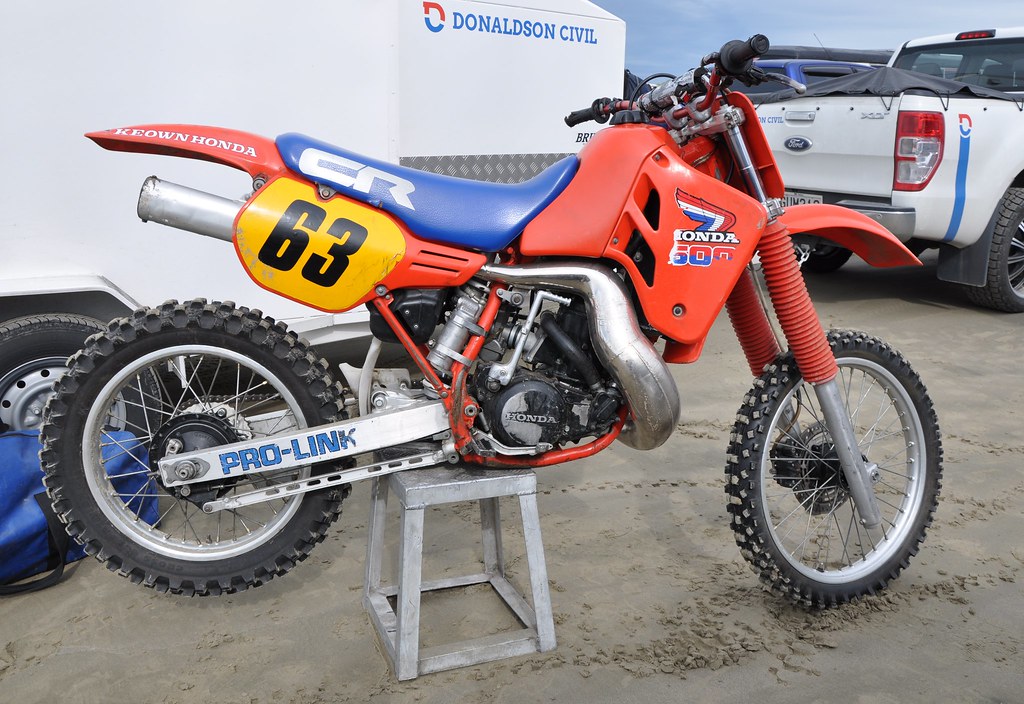
8. **Honda CR500: The Untamed Dirt Devil**Step away from the asphalt, leave the perfectly groomed tracks behind, and let’s delve into the murky, mud-splattered legend of the Honda CR500. The 500cc class of motocross racing may be long dead, consigned to the annals of history, but people still speak of Honda’s monster dirtbike in hushed, reverent tones. It’s a bike so notoriously potent that some whisper if you utter its name three times into a mirror, it will appear and high-side you over a berm. Truly, an anachronistic beast in today’s four-stroke dominated world, where two-strokes have largely vanished from even racetracks, save for the most dedicated hobbyists.
The first CR500 landed in 1984, an unfiltered brute with a 66-horsepower, air-cooled 491cc engine, capable of propelling itself over 90 mph. However, its initial incarnation earned it the infamous moniker “Ping King,” thanks to the rather unhappy sound emanating from a poorly designed combustion chamber. But this is Honda, and they don’t leave problems unsolved. They ironed out the issues, blessed the CR500 with liquid cooling, and transmuted it into one of the greatest – and most feared – open-class two-strokes ever to tear through dirt.
This wasn’t a bike for the faint of heart. With an ultra-narrow powerband that demanded absolute precision and anemic weight specs, the CR500 was a dune-dominating devil with a potent penchant for getting away from even the most seasoned riders. It wasn’t about gentle progression; it was about explosive, brutal power, delivered with a kick that could quite literally rearrange your weekend plans. This raw, untamed character contributed significantly to its mystique.
Since its discontinuation in 2001, the CR500’s cult status has only swelled. A passionate renaissance of interest in Honda’s now-classic dirtbike can be found among amateur riders nationwide, eagerly seeking out these legendary machines. It stands as a monument to a bygone era of motocross, a powerful, unforgiving, and utterly exhilarating testament to Honda’s willingness to build a machine that truly dared riders to tame the wild within.
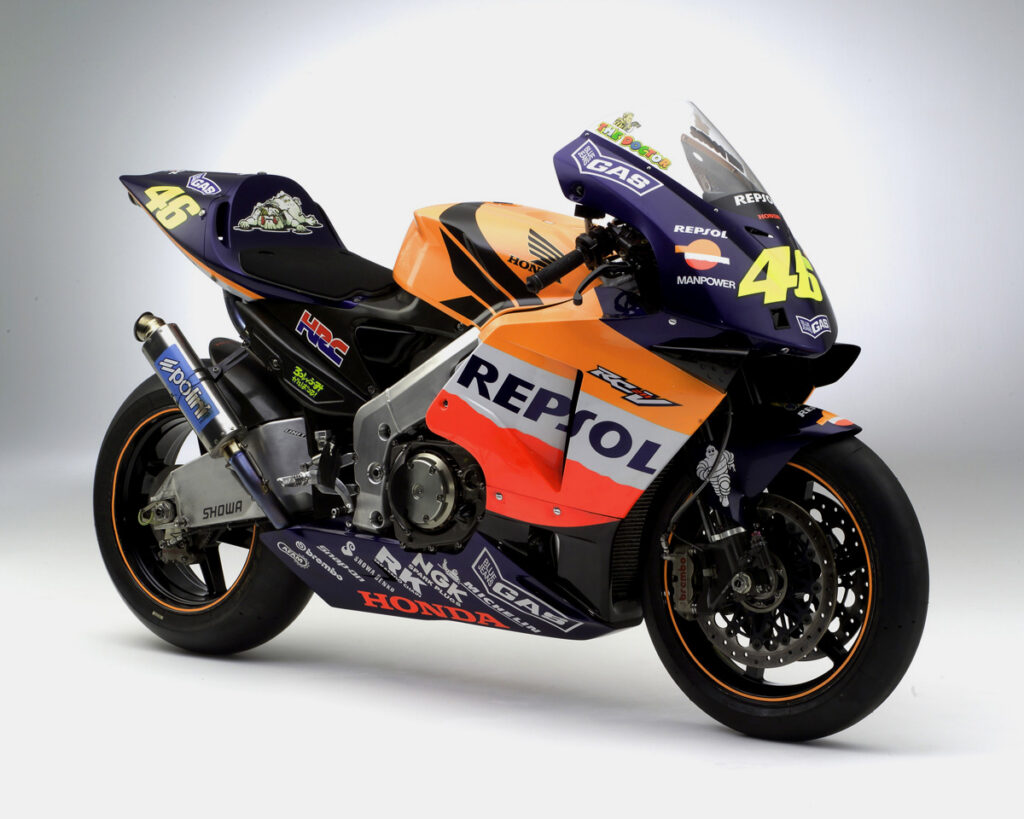
9. **Honda RC211V: MotoGP’s Dominant V5**From the dirt, we pivot back to the pinnacle of two-wheeled circuit racing, where Honda introduced a machine that wasn’t just a legend, but a legitimate track legend with one of the coolest liveries we’ve ever witnessed: the RC211V. With the incomparable Valentino Rossi aboard, this distant descendant of the RC166 didn’t just win; it utterly smoked the competition, taking the 2002 MotoGP constructor’s championship by over a hundred points – an utterly dominant display of engineering and riding prowess.
The RC211V was, to say the least, an unusual bike. While others experimented with inline-fours, Honda boldly presented a four-stroke V5 engine – yes, that’s five cylinders in a V configuration – initially making a formidable 200 horsepower. With three cylinders up front and two in the rear, Honda’s oddity didn’t just participate on the racetrack; it laid down a serious beat down. By the 2003 model year, power was beefed up to an eye-watering 240 horsepower, ensuring its continued reign of terror.
This unique V5 configuration was more than just a novelty; it was a strategic advantage. It allowed riders to open up the throttle significantly earlier than the peaky four-cylinder competition, granting them a crucial edge in achieving top speed faster out of corners. The results were undeniable and frankly, astounding. Honda’s oddity won an incredible 14 of its first 16 contests, signaling that there really was no contest. Its dominance would not only continue but grow, etching its name into the history books.
During its sensational five-year run, the RC211V won a mind-boggling 48 races out of the 82 it entered, powering its way to three riders’ World Championships and four constructor’s titles. These are not merely statistics; they are declarations of absolute supremacy. It’s impossible to argue with stats like that – the RC211V wasn’t just a race bike; it was a phenomenon, a testament to Honda’s audacious engineering and unwavering pursuit of track glory.

10. **Honda CBR1100XX Super Blackbird: The Original Speed Demon**Ah, speed. In the automotive world, few metrics of success resonate as profoundly as pure, unadulterated velocity. And in this arena, Honda’s legendary CBR1100XX Super Blackbird had it in spades. This wasn’t just a fast bike; it was, for a glorious period, the fastest production motorcycle in the world upon its debut in 1996, boasting a top speed of 178 mph. The Blackbird not only blew riders away with its blistering performance but also ignited a fierce competition among manufacturers to create the ultimate speed demon.
Its very existence was a direct challenge to the reigning top-speed champion of the time, the Kawasaki ZX-11. Eager to dethrone the Kawa, Honda poured its engineering prowess into the CBR1100, bestowing upon it the evocative name “Super Blackbird” – a nod to the supersonic American SR-71 Blackbird spy plane. With a certified top speed of 197 miles per hour, it might not have broken the sound barrier, but it certainly wrested the coveted top speed title from Kawasaki’s iron grip, marking a new era of performance.
But the Blackbird was far more than just blindingly fast. True to Honda’s hallmark, it exuded a characteristic smoothness, refinement, and civility – almost akin to gentleness. While its sleek, flowing contours maintain a contemporary aesthetic appeal even by today’s standards, its 1,137cc inline-four engine delivered a velvety 133-137bhp and 78-80 lb-ft of torque. Honda meticulously paid close attention to rider comfort, transforming this speed demon into a beloved sport-tourer.
This was a machine built to eat up miles, comfortably carrying both rider and passenger, especially with the optional hard touring bags. Its relatively relaxed rider position beautifully belied its record-breaking mission. The Blackbird, in its pursuit of ultimate performance, unintentionally gifted riders globally with the likes of the Suzuki Hayabusa and the Kawasaki H2R, proving that competition always sparks innovation. The CBR1100XX Super Blackbird remains revered for its premium craftsmanship, unwavering reliability, commendable fuel efficiency, and enduring comfort, cementing its status as a premier sport-tourer and a true speed-defining icon.
And there you have it, folks – a thrilling, high-octane tour through Honda’s most successful and impactful motorcycles. What a ride it’s been! From the humble, ubiquitous Super Cub that put the world on two wheels to the blistering, record-shattering CBR1100XX Super Blackbird, Honda has consistently redefined what’s possible on a motorcycle. Their legacy isn’t just about horsepower figures or sales charts; it’s about the relentless pursuit of engineering perfection, the unwavering commitment to rider connection, and the sheer, unadulterated joy these machines bring to every twist of the throttle. Whether on the dirt, the track, or the open road, Honda’s finest continue to inspire, excite, and shape the very heart of motorcycling. They are more than just bikes; they are legends, each with a story as rich and exhilarating as the ride itself. So, here’s to Honda – 75 years and counting of pure, unadulterated motorcycling brilliance!

